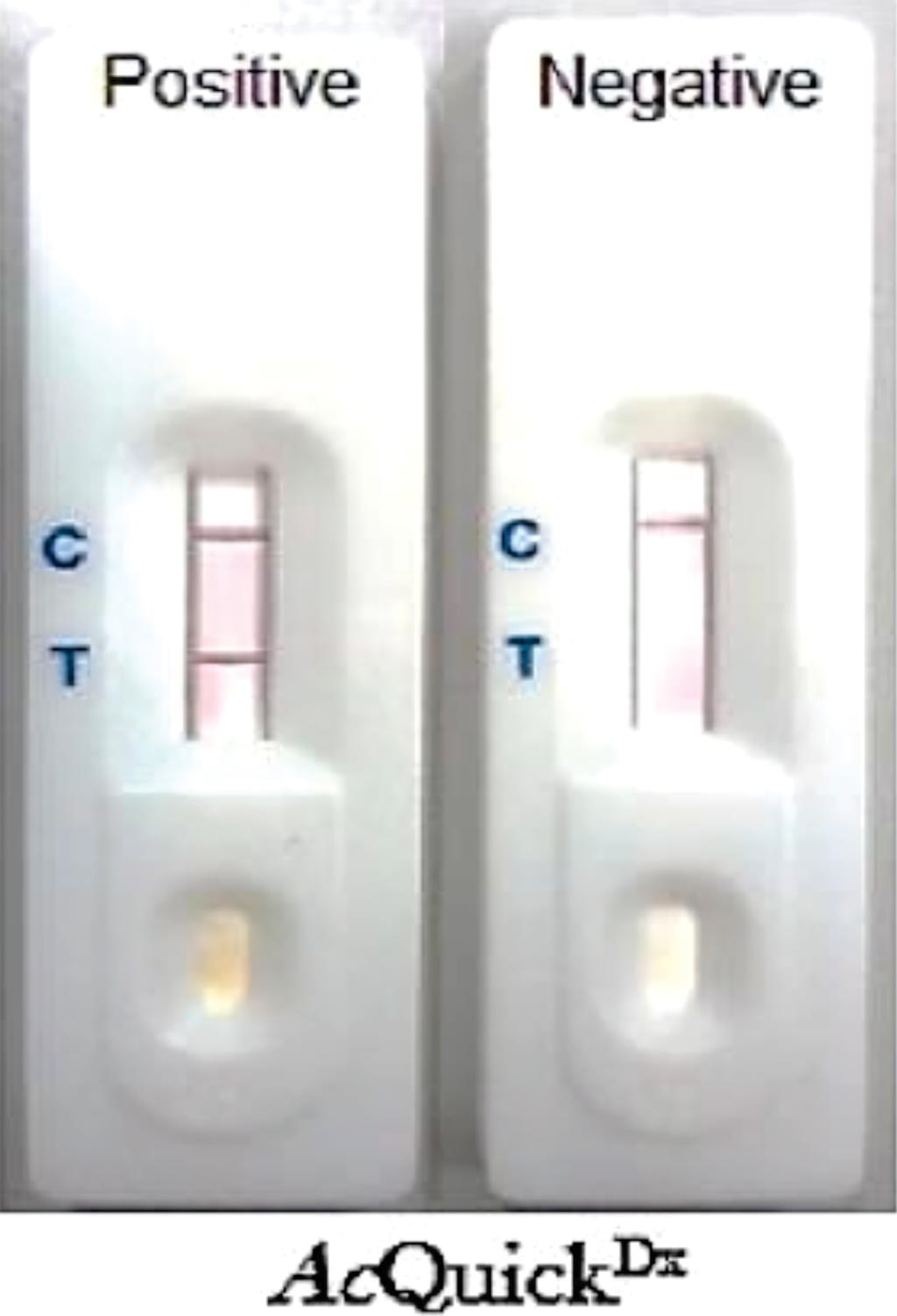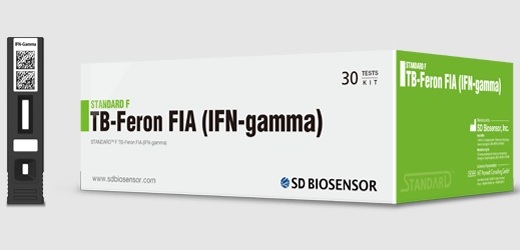Immunochromatographic Test Rapidly Diagnoses Parasitic Infection
By LabMedica International staff writers
Posted on 15 Aug 2018
The rat lungworm Angiostrongylus cantonensis is a food-borne zoonotic parasite that causes eosinophilic meningitis in humans. Suspected cases of A. cantonensis infection can only be confirmed by finding the nematodes in cerebral spinal fluid (CSF) of the patients.Posted on 15 Aug 2018
The serological diagnosis of human infection with Angiostrongylus cantonensis remains problematic because there are no commercially available validated tests. Most laboratories use domestically prepared tests such as the enzyme-linked immunosorbent assay (ELISA) or immunoblotting.

Image: Positive and negative results detected by the lateral flow immunochromatographic assay AcQuickDx test for Angiostrongylus cantonensis (Photo courtesy of Faculty of Medicine Siriraj Hospital).
Scientists working with those at the Mahidol University (Bangkok, Thailand) assessed 97 serum samples: 19 samples from clinically diagnosed patients with detectable A. cantonensis-specific antibody in immunoblotting; 43 samples from patients with other parasitic diseases, such as gnathostomiasis, toxocariasis, trichinellosis, hookworm infection, filariasis, cysticercosis, paragonimiasis, opisthorchiasis, and malaria; and 35 samples from normal healthy subjects.
The test device was assembled with purified 31-kDa glycoprotein as diagnostic antigen and with gold-labeled anti-human immunoglobulin-G as the detector reagent. The team assessed the rapid lateral flow immunochromatographic assay designated AcQuickDx Test to detect anti-A. cantonensis antibodies in human sera. The appearance of a red band at the T line and a red band at the C line within 15 min indicates a positive reaction, whereas the absence of a red band at the T line and appearance of a red band at the C line indicates a negative reaction.
The team found that the sensitivity, specificity, positive predictive value and negative predictive value of AcQuickDx test to detect anti-A. cantonensis specific antibodies in serologically confirmed angiostrongyliasis cases were 100%, 98.72%, 95% and 100%, respectively. Positive AcQuickDx was observed in 1/4 cases with hookworm infections. No positive AcQuickDx was observed in cases with other parasitic diseases, and the individual healthy subjects.
The authors concluded that the AcQuickDx test is rapid, highly sensitive and specific, and easy to perform without additional equipment or ancillary supplies. It yields results that are interpreted visually, and possesses a long shelf life at room temperature. Thus, it can be applied as an additional test for clinical diagnostic support of angiostrongyliasis either in conventional laboratories or for remote areas where laboratory infrastructure is not available. The study was published in the August 2018 issue of the International Journal of Infectious Diseases.
Related Links:
Mahidol University














